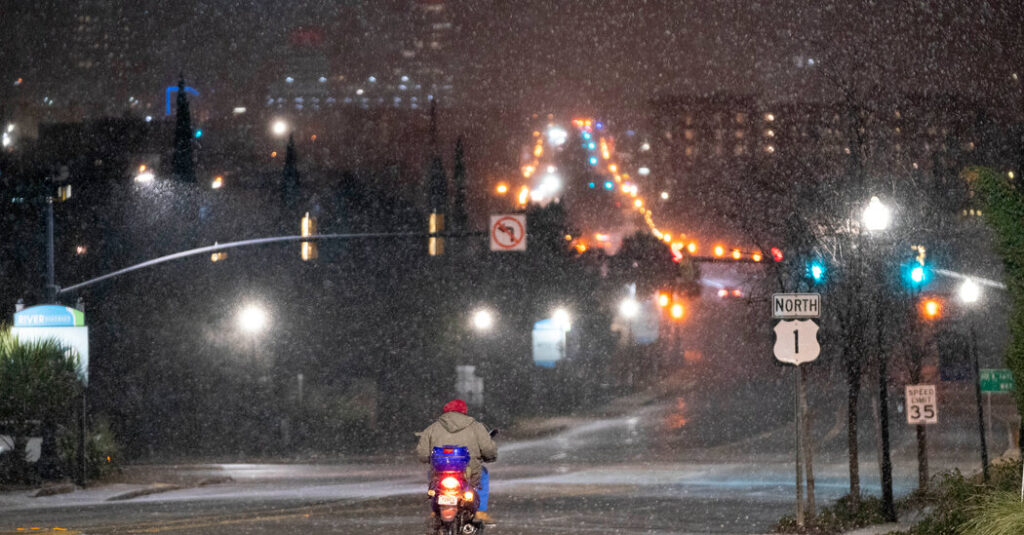A rare southeastern winter storm barreled across the Carolinas early Wednesday, threatening as much as six inches of snow in coastal communities while frigid air left the Gulf Coast and other parts of the region bracing for icy, hazardous roads.
The deadly storm, which has killed at least 10 people, was fueled by a whirling mass of cold air originating from the Arctic. It is expected to leave much of the South in the low-teens or single-digit degrees through Wednesday night.
In North Carolina, Gov. Josh Stein warned residents in the eastern part of the state to avoid all travel on the roads because they were “the most dangerous place to be in a winter storm like this.”
In Charleston, S.C., at least 15 snowplows were preparing to snake through streets and clear them.
And along the Georgia-Florida border, the possibility of ice accumulation — as much as a quarter of an inch — further threatened road conditions.
“Along the Gulf Coast and the Southeast, it’s pretty darn cold for what’s considered to be normal,” said Brian Hurley, a meteorologist with the National Weather Service. And that intense snowfall, he added, could refreeze and make roads dangerous.
On Tuesday, cities and towns from Houston to New Orleans were blanketed with snowfall totals unseen in decades. At least two people died of exposure in Austin, and one in Atlanta. Five people died in a vehicle crash on an icy road in Zavala County, Texas.
The heavy snowfall also broke records in some parts. Mobile, Ala., a coastal city, received more than six inches of snow by Tuesday afternoon, breaking a record from 1895. Just across the border, Florida had a taste of snowfall too and potential local and state records broken, as over eight inches was recorded in the far west of the panhandle in areas including, Milton and Oriole Beach. Meanwhile, Chalmette, La., just east of New Orleans, had recorded 11.5 inches of snow by Tuesday evening.
Victoria Oliva, a meteorologist with the Weather Service in Wilmington, N.C., said that travel conditions would remain hazardous across Eastern North Carolina through at least late Wednesday night, when temperatures were expected to still be hovering in the teens.
The last time that Wilmington had more than four inches of snow was in 2000, Ms. Oliva said, and the last time it received more than six inches was in 1989.
“So this is definitely a rare event for us,” she said.
The reality of so much snow in a coastal town that typically relishes sunny beach days was not exactly welcome news. The city of Wilmington wrote on its Facebook page: “Spring is 58 days away. Just sharing for no particular reason at all.”
In eastern South Carolina, a winter storm warning was in effect through noon Wednesday. Charleston, the beach town that has drawn thousands of new residents in recent years to its regal streets and pristine beaches, was expected to endure frigid wind chills through Wednesday night.
Forecasters were concerned that the accumulated snow in the region could refreeze and cause dangerous road conditions until Thursday morning, said Peter Mohlin, a meteorologist with the Weather Service in Charleston.
After the storm courses through the Carolinas by Wednesday afternoon, it is expected to dissipate.
Read the full article here

















